Pick up today's New York Times. Stephanie Strom wrote a great article, "Donors Gone, Trusts Veer From Their Wishes." .....MORE......
Donors Gone, Trusts Veer From Their Wishes
By STEPHANIE STROM
September 29, 2007
When Mamie Dues died in 1974, she left the fortune her husband, Cesle, had made in movie theaters in El Paso to a foundation controlled by a local bank there. The couple had no heirs and no other family.
“They lived modestly in a little apartment house and spent most of their time watching TV,” recalled J. Sam Moore Jr., a lawyer who drew up their wills. “They took little or no interest in civic affairs, but they did feel strongly about this place, and they mandated that their foundation be concentrated on crippled children in El Paso, and in Texas more broadly.”
Three decades later, however, the foundation’s legal address is in Delaware, and a global bank, JPMorgan, manages it from an office in Dallas. While its assets have grown to almost $6 million, from $5.1 million in 2000, its giving has fallen sharply, and the local group that once decided who would receive its money no longer has a say in its operations.
Such is the fate of many “orphan” trusts and foundations around the country that have been left in the hands of lawyers or local banks that have then been swallowed up by multinational financial institutions.
With no family members to encourage gifts to the original donor’s favorite causes, the banks and lawyers have wide latitude to change the way the trusts operate and to decide which charities will receive grants.
Banks can reduce gifts and increase the foundation’s assets, thus increasing their fees. At the same time, banks and lawyers stand to gain personal influence and prestige by selecting new charities.
“Donors who’ve given us money for years die, their money ends up in a foundation controlled by their lawyer or their bank, and we don’t get any more grants,” said Juliana Eades, president of the New Hampshire Community Loan Fund.
An examination of several orphan trusts found these cases:
When large global banks take over, the number of grants often drops sharply, reducing the bank’s administrative costs. But bank fees, which are based on the amount in the trust, increase..
Small local grant recipients that have historically received money are either dropped in favor of larger charities or receive money far more sporadically.
New grant recipients sometimes include the alma maters of trustees or organizations with which they and their families have personal relationships.
Regulators have limited ability to identify such trusts and foundations and monitor them.
No one knows how many orphan trusts and foundations exist. At the request of The New York Times, the Foundation Center identified 3,935 foundations that reported a financial institution as their sole trustee, out of a total of more than 77,000 foundations in its database. Those foundations control $5.4 billion in assets, and gave away $256.1 million in 2005.
Several banks declined to discuss their administration of such trusts. However, a JPMorgan official agreed to an interview, and he emphasized that the bank strived to honor donors’ wishes.
“When we are determining what dollars are available for distribution, we look at I.R.S. requirements, the trust’s market value to ensure its lifelong preservation, and the number of qualifying proposals from grantees,” said Larry Bothe, senior fiduciary officer at JPMorgan. “As fiduciaries, our only guiding principle and duty is to the trusts.”
JPMorgan declined to disclose how many trusts and foundations it has sole control over.
Trustees Have Discretion
Because many wills are deliberately constructed to allow flexibility to adapt to changing circumstances, banks and lawyers have considerable discretion in managing them.
“The issue is that with the consolidation of these assets that has occurred through bank mergers, bank trusteeships — which were largely a community role for the bank — have become profit centers and a way to enhance a bank’s philanthropic image,” said Rick Cohen, the former executive director of the National Committee for Responsive Philanthropy, a watchdog organization. “Law firms benefit in similar ways.”
Assets at the Cesle C. and Mamie F. Dues Foundation climbed roughly 20 percent since 2000, when JPMorgan took over its management after merging with the Chase Manhattan Bank in 2000. Fees climbed by a similar percentage. But the foundation’s giving has dropped 59 percent, from a high of $330,256 in 2000, when the El Paso Community Foundation controlled the grants, to $135,200 in the last fiscal year. In the same period, the number of organizations receiving grants fell from more than 24 to 6.
In 2002 and 2003, JPMorgan moved to sever the ties between the El Paso Community Foundation and the Dues Foundation and two other local foundations that the El Paso foundation controlled.
The El Paso foundation took JPMorgan to court and, in a settlement, retained control of the largest of the three foundations. The bank became sole custodian of the other two, Dues and the small Robert U. and Mabel O. Lipscomb Foundation.
The Lipscomb Foundation’s giving has declined 72 percent since 2000, even as the foundation’s assets rose 19 percent.
Moreover, in fiscal 2006, the bank did not abide by the terms of the Lipscomb will, which stipulated that a third of the foundation’s annual distributions would go to the Roman Catholic Diocese of El Paso, a third to the El Paso Museum of Art and a third to organizations in El Paso that aided people with hearing and vision problems. Grants were made to the diocese and the art museum in 2006, according to the foundation’s tax records, but not to any other organizations.
The bank said that it made the required gifts in the next year.
Mr. Bothe of JPMorgan defended the reduction in giving by both the Dues and Lipscomb foundations.
“When we picked things up in mid-2002 and 2003, it would not have been prudent, given market conditions, to have maintained distribution at the same historical levels,” he said. “To do so would have severely impacted the long-term viability of the trust. So we have met or exceeded the required minimum distribution and at the same time added back to value of the portfolio.”
He said the two foundations’ giving would rise, now that their assets had grown again.
In fact, its giving must increase or the foundation will fall afoul of tax laws that require foundations to distribute a minimum of 5 percent of their assets annually.
In contrast, the El Paso Community Foundation in 2005 gave more than 24 charities a total of $468,950 out of the Walter H. Hightower Foundation, the organization over which it retained control. The foundation had $9.7 million in assets and paid $64,195 to the Bank of the West for managing its money and $15,000 to the community foundation for administration.
That was only roughly $10,000 more than what JPMorgan was paid by the Dues Foundation, which had a little more than half the assets of the Hightower Foundation and made far fewer grants.
Building and Burnishing
In 2002, the Duke University School of Nursing received the largest grant in its history, $6 million, to create an accelerated bachelor’s degree program.
The university’s press release said that the “gift was given by the Helene Fuld Health Trust, HSBC Bank, USA, trustee,” and Leslie E. Bains, the bank’s executive vice president, was quoted throughout it.
The release did not mention Ms. Bains’s association with the university. Ms. Bains, who is no longer at HSBC, is a member of the board of visitors of its Terry Sanford Institute of Public Policy and its medical school, and her two children went to Duke.
“It’s not just fees that make these things attractive to banks and lawyers,” said Jack Siegel, a tax lawyer who writes a blog on charity governance. “These things are just as valuable in building business and burnishing images. The law firm gets the credit for the gift made out of a trust it manages.”
Ms. Bains, who now works for a private equity firm in New York, declined to comment. But her spokeswoman, Marcia Horowitz, said that while Ms. Bains introduced bank administrators to Duke officials, “she recused herself from any decision making regarding the awarding or the amount of a grant to Duke.”
HSBC confirmed that statement. “Because it was broadly known by HSBC senior management that Leslie Bains had a relationship with Duke, HSBC’s trust department conducted the grant-making decision without her involvement,” Francine Mindaneo, an HSBC spokeswoman, said in a statement.
The originator of the Fuld trust was Dr. Leonhard Felix Fuld, who named it for his mother and endowed it with $25 million made in the stock market and in real estate.
He was known up and down the Eastern Seaboard for wandering into hospitals and asking after the health of student nurses working there. Often, the hospital subsequently received a gift from him to underwrite a new nurses’ residence or a scholarship program.
Dr. Fuld died in 1965, and the fund ended up under the stewardship of Marine Midland Bank, making dozens of grants to develop nursing education at nursing schools in out-of-the-way places and running a fellowship program that made grants to individual nurses to further their education. In 2000, the fund made 150 grants, totaling $6.7 million.
Last year, the $136 million fund, now managed by HSBC, which took over Marine Midland, gave away the same amount of money in 28 grants. Its scheduled payment to Duke accounted for nearly 18 percent of the total. Its fees for making those grants and investment management were $576,996.
Making fewer, larger grants is a trend in philanthropy. By eliminating the labor-intensive fellowship program, reducing grants and doing away with things like an annual report, HSBC has sharply reduced the administrative costs of managing the Fuld trust. But dozens of smaller colleges and community colleges and their students no longer benefit from the trust.
“The bank decided it would rather manage the trust internally,” said Richard Mittenthal, president of TCC Group, a consulting firm that set up and administered the previous grant program for Marine Midland. “The new trust officer thought our strategy was too elaborate and that the bank could manage the trust more efficiently by making smaller numbers of larger grants.”
During his affiliation with the trust, Mr. Mittenthal said, it had never given money to Duke.
Trend Spotting
Although some states require all charitable entities to make periodic reports to their attorneys general, regulators say they have no easy way of identifying problems with orphan trusts. Such filings, for instance, would not disclose relationships between sole trustees and organizations receiving grants from the institutions they control.
“How are we going to find out?” said Belinda Johns, senior assistant attorney general in the charitable trusts division of the California attorney general’s office. “There is no way to identify these organizations easily, and so we have to rely on someone telling us that there’s a problem.”
That was the case in 2002, for example, when the Minnesota attorney general replaced three lawyers who controlled the George W. Neilson Foundation after finding that they were also billing the foundation for legal work, and reportedly doing so at excessive rates.
A complaint led the Supreme Judicial Court of Massachusetts to rule in January that two lawyers who were the trustees of seven trusts known as the Crabtree trusts had charged excessive fees and to order their removal.
A Regulator Steps In
Once in a while, however, the regulators spot potential problems on their own.
In 2004, the New York attorney general’s office sent the Internal Revenue Service a letter alerting it to problems it had identified in the management of five orphaned foundations.
Until that year, Lawrence Newman and Albert Kalter, two Manhattan lawyers, served as paid trustees for all five foundations, frequently listing their wives as unpaid trustees.
William Josephson, the head of the attorney general’s charities bureau at that time, said his office was concerned that the total amount of compensation paid to Mr. Kalter and Mr. Newman out of the foundations’ money had been excessive and might amount to self-dealing and that the gifts they had made failed to honor the intentions of the donors who established them.
The attorney general’s office did not file any charges. What action, if any, was taken by the I.R.S. is not known because the agency is prohibited by law from disclosing investigations or discussing their outcomes.
But what is known is that the lawyers changed some practices after the attorney general’s office began raising questions.
Before the inquiry, for example, in 2003, the five foundations under Mr. Newman and Mr. Kalter’s control made grants totaling $596,731, and the two paid themselves $99,000 each. That year, one of the foundations, the F. Jackson Foundation, made just one grant, of $500, to the Juvenile Diabetes Foundation, and paid Mr. Newman and Mr. Kalter $6,500 each.
Under their administration, another of the foundations, the Sewell Foundation, lost more than 60 percent of the market value of its assets from 1998 through 2005, and two others lost more than 35 percent, according to their tax forms. The assets of the two largest foundations under their control, the Milton and Miriam Handler Foundation and the 1987 Theodore H. Silbert Foundation, were largely flat over that period, when most other foundations reported increases.
The foundations made grants to Mr. Newman’s and Mr. Kalter’s alma maters and to the private school Mr. Newman’s grandchildren attend in Florida, as well as to synagogues with which they are affiliated. They also made grants to Pace University, where the two men teach, and to Columbia University, where Mr. Newman is an adjunct professor.
“It’s not a legal question in a technical sense,” Mr. Josephson said. “But it raises ethical questions about the extent to which trustees should honor donor intent.” Those patterns of payment and giving prevailed until 2004, when the attorney general’s office complained to the I.R.S.
That year, the two lawyers, who declined to be interviewed, split control of four of the five foundations between themselves and slashed their fees. They also installed their children as trustees, in lieu of their wives.
In 2005, only the two largest foundations paid them fees at all, according to tax forms.
MLK said: "Injustice Anywhere is a Threat to Justice Everywhere"
End Corruption in the Courts!
Court employee, judge or citizen - Report Corruption in any Court Today !! As of June 15, 2016, we've received over 142,500 tips...KEEP THEM COMING !! Email: CorruptCourts@gmail.com
Most Read Stories
- Tembeckjian's Corrupt Judicial 'Ethics' Commission Out of Control
- As NY Judges' Pay Fiasco Grows, Judicial 'Ethics' Chief Enjoys Public-Paid Perks
- New York Judges Disgraced Again
- Wall Street Journal: When our Trusted Officials Lie
- Massive Attorney Conflict in Madoff Scam
- FBI Probes Threats on Federal Witnesses in New York Ethics Scandal
- Federal Judge: "But you destroyed the faith of the people in their government."
- Attorney Gives New Meaning to Oral Argument
- Wannabe Judge Attorney Writes About Ethical Dilemmas SHE Failed to Report
- 3 Judges Covered Crony's 9/11 Donation Fraud
- Former NY State Chief Court Clerk Sues Judges in Federal Court
- Concealing the Truth at the Attorney Ethics Committee
- NY Ethics Scandal Tied to International Espionage Scheme
- Westchester Surrogate's Court's Dastardly Deeds
Saturday, September 29, 2007
With No Oversight, Picking the Bones of the Dead (CLICK HERE FOR FULL STORY)
Subscribe to:
Post Comments (Atom)
Blog Archive
-
▼
2007
(167)
-
▼
September
(31)
- "Foxes Make Poor Custodians of Henhouses," says La...
- With No Oversight, Picking the Bones of the Dead (...
- NY Jurist Says She'll Never Judge Again....(CLICK ...
- The Washington Legal Foundation - Needed in New Yo...
- Black Robes and Greenbacks: Judges Give Back Pay R...
- Letter From Iviewit.tv Folks Re: Rigging Elections...
- AP: Judge Indicted on Federal Perjury Charge...
- Judicial Steering Continues in Westchester County....
- URGENT: Hearing on Federal Judges Disciplining The...
- Federal Judge Acts On Westchester 1st Amendment Ab...
- A Witness Writes In....(CLICK HERE FOR FULL STORY)
- Nostalgically, One Last Rigged Supreme Court Judge...
- The Thugs Won't Get Away With It, Judge Phillips !...
- NY Justices Have 2 Jailed Mississippi Judges On Th...
- 'Malled' by Staten Island Judge....CLICK HERE FOR ...
- Brooke Astor Court Attorney Living in Dead Lady's ...
- Lawyer's Fund Prepares for Cahill Ethics Claims Fa...
- Judge Pfau, Bronx Bomber, Encouraging History…CLIC...
- Judicial Cannibalism Gnaws on Retired Judge…..CLIC...
- 40 Million Dollar Judge Silent on Judicial Pay Rai...
- 3 Judges Covered Crony's 9/11 Donation Fraud….CLIC...
- Carvel: Legacies Become Larcenies in NY Estate Cou...
- One of the Few to Confront Corruption Flees Albany...
- Shoe-In Lawyer Not on "Qualified" for Judge List.....
- New Chief Counsel at Judicial Ethics Committee
- Why Are Some Judges Disciplined Differently?
- 40 Million Dollar Judge Has No Conflicts
- Ethics Committee Hides Another Complaint - The Wan...
- NY Post on Judge Phillips Attack...CLICK HERE FOR ...
- More On: Corruption Targets Retired Judge Phillips...
- Corruption Targets Retired Judge...(CLICK HERE FOR...
-
▼
September
(31)
See Video of Senator John L. Sampson's 1st Hearing on Court 'Ethics' Corruption
The first hearing, held in Albany on June 8, 2009 hearing is on two videos:
Video of 1st Hearing on Court 'Ethics' Corruption
The June 8, 2009 hearing is on two videos:




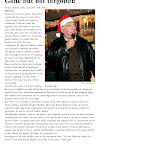

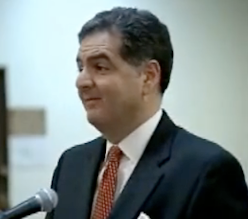
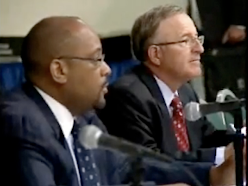
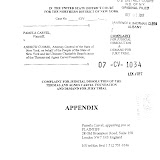
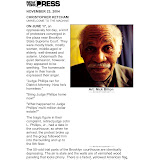
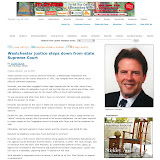
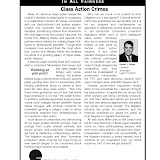

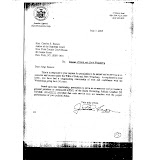
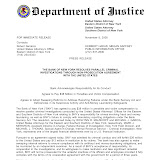
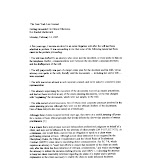
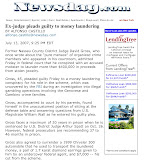
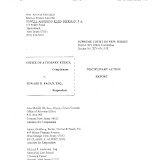
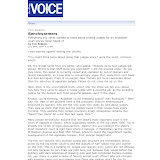
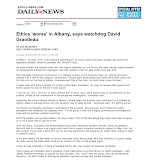
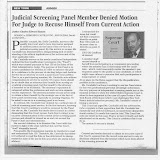

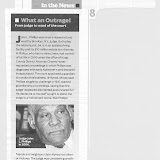
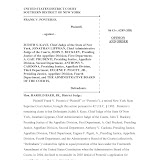
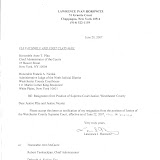
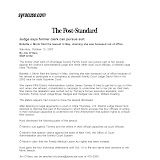
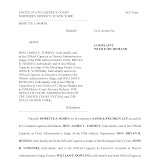

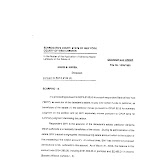
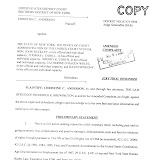
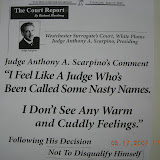

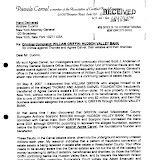
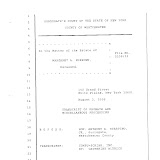
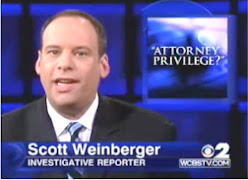
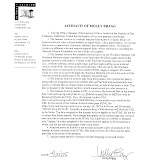
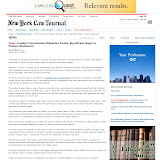
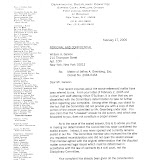
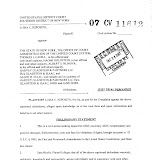
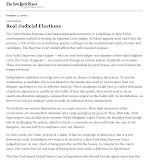
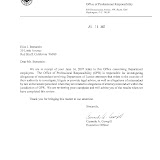
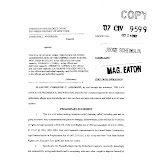
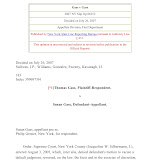
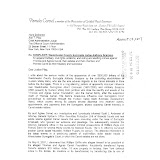

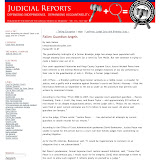
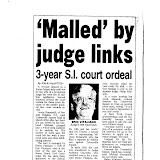
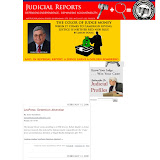
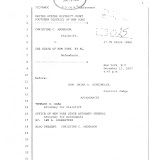
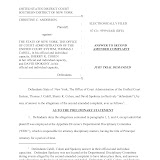
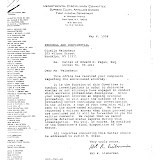
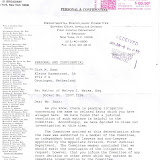
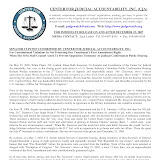
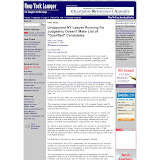
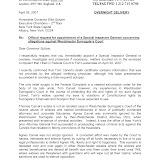
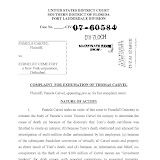
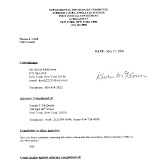
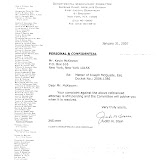
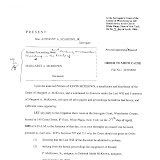
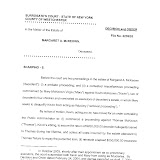
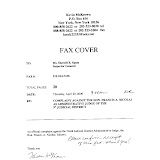
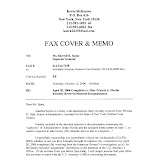
16 comments:
"Professional Fiduciaries" (read Banks and Trust Cos)occupy a special status under New York Law. Holding them to this is another matter and they know it. Any Beneficiary who questions a "Professional Fiduciary" has a problem. I found out the hard way and my issues were all valid. If they are taken to a Surrogate Court you lose since they own the Courts. You also lose since you have legal fees to pay and the Bank takes their legal fees out of your Trust. What a great business model these con men have devised.
Hey, don't you understand it's not your money man it's there's and no one cares who your family was.
And the IRS and state taxing authorities get screwed also. Bring in the feds to really look into the banks and lawyers and what they do with in these fiduciary roles. It's criminal.
Hello,
I am writing on behalf of my uncle, Alfred Mancuso, who has been unlawfully imprisoned at Collins Correctional Facility for over 30 years. I would please ask that you visit the website that I maintain for him, and review what is there. You might find it especially interesting to read and learn that he was tried and convicted under forged and counterfeited indictments. We have documented proof of this. You can actually see the indictments on our site. It is very apparent that they were tampered with. I know that this may sound remarkable to you, but I promise you that Alfred is a very serious man and a very astute student of the law. I encourage you to visit our website at:
http://www.PeoplesForumForExposureOfCorruptJudgesAndProsecutors.com
After your review of the site, you can contact me by replying to this email, you can email mysefl or my uncle from our site.
Thank you,
Anthony Mancuso
The mere fact that the NY Times would print this story (above the fold) yesterday 9/29 is very significant. The time has come to expose these Banks & Lawyers.
The article which was good is only the beginning. Trusts are looked at as income steams by the controlling Fiduciaries, be they Banks, Attorneys or others. And when one grumbles you are told nothing can be done, that's the way it is.
Don't let some lawyer talk you into a signing any trust document. It almost happened to me - but I woke up in time. Anyone who would sign a trust document is crazy.
Absolutely, my lawyer told me to form a Trust for my wife and children and he would be the Trustee. He's my former lawyer now, I fired him.
I nearly made a trust and my wife told me I was crazy if I did it. She knew someone who had alot of trouble with a bank on a trust. My attorney pushed the idea. So glad I didn't do it.
My lawyer tried to sell me on a trust as a way the save taxes. I thought it was a scam.
DON'T TRUST A TRUST, IT'S A SWINDLE THAT THE BANKS AND SOME GREEDY ATTY'S USE!
you can't trust a trust or a bank and I speak from experience
Once they have control it belongs to them, that's simple I get it!
Trust in this sense is an OXYMORON!
who could trust any of these jerks?
Just look at what happened in the Carvel Trust & Foundation and then a Surrogate Judge condones it?
Post a Comment